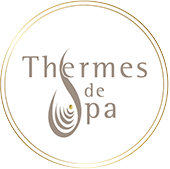
All about Spa Water
Water is the source of life.
But why is water so important? What are the different varieties of water? And what are their qualifications?
The different kinds of water
There are three types of water: natural mineral water, spring water and tap water.
Distribution Water is commonly called ‘tap water’. It comes from underground and surface catchments (including rivers). To become clean, it undergoes multiple chemical and microbiological transformations. Before transport, tap water is chlorinated to prevent the growth of bacteria and pathogens.
Source water is a groundwater that is drinkable at the source without any treatment. It meets the same requirements as tap water. Mineral composition may vary, as it comes from various sources, sometimes very different from one another.
However, the composition of a natural mineral water, like the Spa water is always the same.
It’s an underground water with a pristine purity. It must be free of any risk and therefore strictly protected. It must have a stable mineral composition over time. Finally, it can not undergo any chemical or microbiological treatment and finally it must be bottled at the source.
The 3 mineral waters of the Thermes of Spa
The Clementine spring
Rich in bicarbonate and calcium, the water from this spring, heated to 33ºC, supplies the central areas before spreading to the periphery to feed Jacuzzis, bubble seats, massage mushrooms or jets, promising relaxation, invigoration, suppleness…
Origin
Natural mineral water located on the northern flank of the Spa massif in a fairly complex geological feature, called the « Fenêtre de Theux ».
The feature contains rocks from the Carboniferous and Devonian eras (350 to 400 million years ago) composed of limestones, dolomites, sandstones and schists.
Its uses
- Digestion
- Liver detoxification
- Balneothérapy
Its characteristics
It contains calcium Bicarbonate.
Composition
| Ca | 70 mg/l | SiO2 | 9 mg/l |
| Mg | 12 mg/l | Fe | — |
| Na | 13 mg/l | Mn | 9 mg/l |
| K | 10 mg/l | Dry residue 180°C) |
275 mg/l |
| Ci | 10 mg/l | CO2 g/l | — |
| C04 | 10 mg/l | ||
| NO3 | 5 mg/l | pH | 7,1- |
| HCO3 | 275 mg/l | rH | 25 |
The Reine (Queen) spring
Very low in mineral salts, it is used as a drink to eliminate toxins.
Origin
Natural mineral water located within the fissures in the demineralised, quartz phyllite Cambrian bedrock, (500 million years).
This type of natural mineral water originates from a deposit located between the 575 m depth marker of the post primary peneplain and the base of the strongly demineralised zone at a depth of 400 / 440 m
Its uses
- Diuretic therapy
- Rehydration
- Low sodium dietary regime
Its characteristics
Very low mineral content
Composition
| 4,5 mg/l | SiO2 | 7 mg/l | |
| Mg | 1 mg/l | Fe | — |
| Na | 3 mg/l | Mn | 0,025 mg/l |
| K | 0,5 mg/l | Dry residue 180°C) |
33 mg/l |
| Ci | 5 mg/l | CO2 g/l | — |
| S04 | 4 mg/l | ||
| NO3 | 1,9 mg/l | pH | 6 |
| HCO3 | 15 mg/l | rH | 20 |
The Marie-Henriette spring
It is a naturally iron bearing and carbonated water.
Its properties mean it is used for carbonated baths, peat baths (pains and rheumatic ailments), inhalations, (in this case the active agent is the sulphur contained in the water).
The Marie-Henriette spring comes from 3 catchments sharing the same attributes and originating from the same aquifer. Marie-Henriette, Wellington and Tonnelet. It arrives at Les Thermes through the same pipe.
Brush them away…they slowly reform, just a bit smaller.
Origin
Very old natural mineral water, located adjacent to faults allowing deep water to be brought to the surface in the form of an emulsion in dissolved gas.
This gas primarily originates from the decomposition of marine carbonates located at great depth.
Its uses
- Carbonated baths
- Spa massage showers
- Power showers
Its characteristics
Naturally sparkling, bicarbonated, iron bearing, manganese bearing
Composition
| Ca | 11 mg/l | SiO2 | 8 mg/l |
| Mg | 6,5 mg/l | Fe | 15 |
| Na | 7 mg/l | Mn | 0,75 mg/l |
| K | 1 mg/l | Dry residue (180°C) |
80 mg/l |
| Ci | 5 mg/l | CO2 g/l | max 3,8 mg/l |
| S04 | 8,5 mg/l | ||
| NO3 | < 0,2 mg/l | pH (degassed water) | 6,5 |
| HCO3 | 70 mg/l | rH (degassed water) | 16 |


